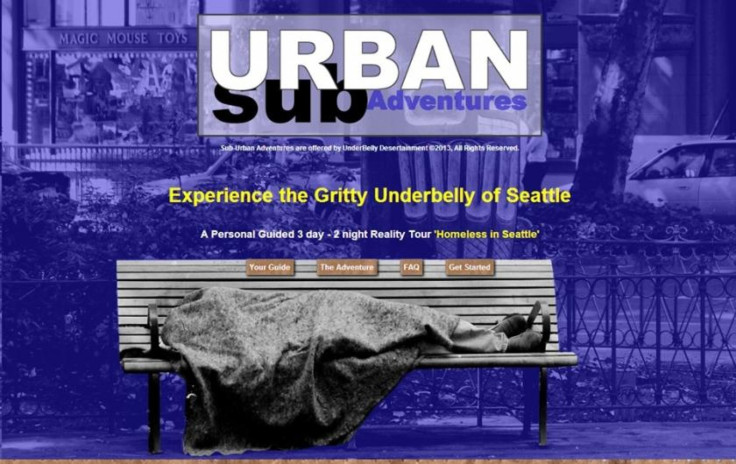Seattle Homeless Tour: Mike Momany Offers Course In ‘Applied Homelessness’ For A Mere $2K

Seattle resident Mike Momany took two months off this past summer “to practice a form of minimalism,” intermittently living on the streets of the Emerald City to learn about all the resources it provides to the underprivileged. Now, the out-of-work computer programmer wants to share his experience in “applied homelessness” with you -- all for the humble price of $2,000.
“I learned that homelessness is nothing to fear, albeit nothing to aspire to either,” Momany writes on his website realviewtour.com. “In three days I will give you a crash experience of the homeless lifestyle. You will gain a new respect for the folks that find themselves in this predicament [and] you will see the seedier side of Seattle in a new light.”
According to the website, the Sub-Urban Experience is a unique tour where visitors are injected into the Seattle homeless culture with proper garb and a lengthy backstory in order to experience it from the inside. The tours are purportedly 100 percent real and, as such, “not for everyone.”
In fact, the once-weekly course in applied homelessness is for men only and requires a preliminary interview to determine “if you have the disposition to execute the act.” Momany said it is not nearly as dangerous as it may sound, and he will “teach some homeless etiquette that will go a long way towards gaining respect and facilitating interesting conversations.”
Seattle residents need not worry about being recognized by family or friends either. “The disguise you use will make you unrecognizable in your circle and, at the same time, convincing to the people we encounter along the way.”
Highlights of the three-day, two-night Real View Tour include a visit to some popular homeless gathering spots like the Public Market, a stay in a homeless shelter, an early morning wander, and stops at popular haunts like Recovery Café and Fare Street, in addition to optional lessons in panhandling and sleeping on park benches.
The first five outings will run at a special discounted rate of $750 per person plus $400 in “expenses.” Thereafter, an “all-inclusive” fee of $2,000 applies, though churches, social services workers and travel professionals can inquire about special discounts.
Reaction to Momany’s Seattle homeless tour has been particularly negative in his hometown, where the homeless population has risen 15 percent since 2007 to more than 9,000 people. Critics have called it everything from “exploitation” to “poverty tourism.”
“Homeless people are not exhibits,” one woman wrote on Real View Tours’ Facebook page. “It is one thing to bring attention and awareness to the homeless situation in our community, but to charge $2,000 AND take away a bed from someone who has no other choice? Repugnant,” another added.
Most critics question why Momany would pay himself such a large fee when $2,000 could go a long way toward supporting the homeless families whose plight he claims to be sharing with the world. Momany told local news organizations that he plans to donate a portion of the proceeds to the agencies he visits during the tour, but this has done little to quell the uproar.
“If this were a fundraising effort to channel the moneys to nonprofits and shelters serving the homeless, it would merely be odious, placing real-life homeless people into a diorama for the education of tourists,” Nonprofit Quarterly notes in an editorial. “Like almost any fruitcake idea without humanity, there will be some depraved person who will take Momany up on his idea for humiliating and objectifying homeless people.
“Every shelter and every nonprofit serving homeless people should plaster Momany’s picture -- before and after his homeless tour ‘persona’ -- on their walls and boot him out, should he show up with his homelessness tour participants in tow.”
Caitlin Bancroft of PolicyMic points out that the people who live on the street in Seattle are not there by choice. “Their circumstances and appearance are the result of necessity. It is cruel to dress up and playact their lives. It stereotypes and mocks the people and the community. To add insult to injury, the guide commodifies the experience by charging people to participate.
“It is possible to encourage empathy without abusing the community that needs help. But this certainly isn't it.”
© Copyright IBTimes 2025. All rights reserved.






















